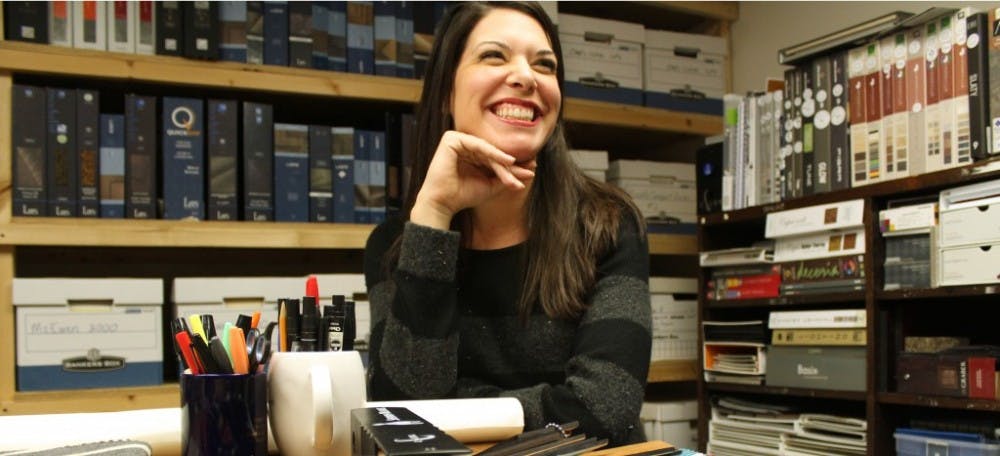It’s the faces that tell all, according to Holly Hodge, interior designer for Elon University.
“Just to see people’s faces for the first time when they’re walking through when everything is in place — just to see people’s gratitude — that’s what makes what I do all worth it,” she said.
Since arriving at Elon about a year and a half ago, after spending eight years working in architecture, Hodge has been involved in the planning and design for the spaces students, faculty and staff visit everyday.
“One of the things about higher (education) that I love, when you think about it, is you’ve got everything in this little bubble,” she said. “If you look at a student space, it has a different feel from a professional office space. Each space is different, which makes my job exciting.”
Her first project included the creation of a graphics package for the Alumni Field House, which opened in January 2011. Since then, she has planned, among others, the new Colonnades residential area, the Student Professional Development Center, the Gerald L. Francis Center and the Station at Mill Point, slated to open in the fall.
And despite the experience she’s gained, she said the job has not necessarily gotten easier.
“Each project is different and a new assignment,” she said. “Every day is different for me.”
For each project, Hodge follows a specific process to complete a design, working alongside a team of architects and project managers from the department of planning, design and construction management.
It begins with programming, or meeting with end users to determine their vision and use of the space. She then transfers that idea to paper.
“(It’s) fun because it’s like a puzzle,” she said. “I usually sketch things and then transfer to the computer to see if it fits in different areas. I like to visualize how things are going to look in real life.” Next comes the selection of materials for the space, including carpets, base colors and the accents that “make it come to life,” according to Hodge. “That’s when you see a glimmer in peoples’ eyes, like ‘This is for real,’” she said. “(It’s) the little details that come into it — the art and signage that create a brand for the space that make it a bigger picture.”
Finally, the project moves into construction, which Hodge monitors closely to ensure everything is built to the correct standards.
While not all universities have an interior designer, Hodge said she views her position as a key one.
“We have a holistic approach to the campus, so there’s some type of unity and standards involved so it’s not just a building,” she said. “We work to (achieve) consistency. We know what works and what doesn’t.”
Always a creative person, Hodge said she’s sought a career that would allow her to utilize that passion on a daily basis.
“I’ve always been involved in design and I can honestly say I love what I do,” she said. “Not many people can say that.”


